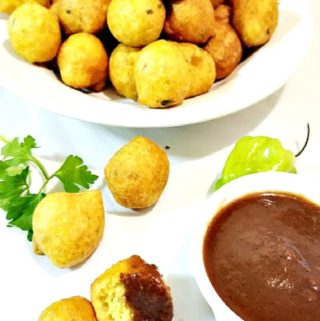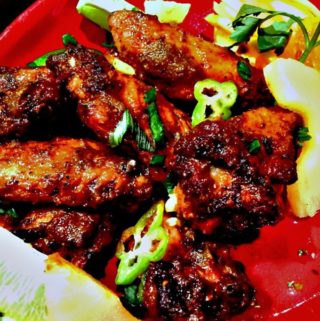Japanese culinary tradition is steeped in centuries-old customs that shape
what people eat and how food is prepared, served, and consumed. Rooted
in the principles of harmony and seasonal awareness, the Japanese
approach to cuisine begins long before ingredients reach the plate.
Influences from Zen Buddhism and the concept of “washoku,” which
emphasizes balance and natural flavors, continue to inform Japan’s
contemporary food landscape.
A deep respect for nature is at the core of Japanese culinary values.
Dishes are crafted with a keen awareness of the seasons, with chefs
prioritizing ingredients at their peak ripeness. This seasonal mindfulness,
known as “shun,” ensures that meals are not only flavorful but also aligned
with the rhythms of the environment. In this way, food reflects time and
place, fostering a connection between diner and nature.
Even in an era of fast food and globalized diets, Japanese culinary
traditions exert a powerful influence. The meticulous preparation
techniques and reverence for presentation are often preserved, even in
modern contexts. Traditional elements persist from fine dining
establishments to neighborhood izakayas, shaping the broader perception
of Japanese food as both an art form and a cultural ritual.
Art of Presentation: Visual Elegance on the Plate
Presentation in Japanese cuisine is not an afterthought but central to the
dining experience. The concept of “kaishoku,” or seasonal dining
aesthetics, goes beyond mere visual appeal to encompass the emotional
response of the diner. Meals are arranged carefully, and tableware is
carefully selected to complement the food and the season.
This dedication to visual harmony finds its way into modern culinary spaces
worldwide. Chefs studying Japanese methods often adopt its nuanced
aesthetics, integrating techniques like color balancing and plate minimalism
into their cuisine. These subtle visual cues create calm and contemplation,
adding a layer of psychological pleasure to the dining experience.
From sashimi delicately draped over crushed ice to tempura arranged on
handpicked leaves, the influence of Japanese presentation is
unmistakable. Even Western dishes are sometimes plated in a manner
reminiscent of traditional Japanese styles, reinforcing how these customs
transcend cultural boundaries and elevate the global culinary dialogue.
Ingredients: Simplicity That Highlights Excellence
At the heart of Japanese cooking lies a reverence for the ingredient itself.
Rather than masking flavors with an array of spices or sauces, Japanese
cuisine emphasizes the innate qualities of each component. This
philosophy of simplicity has informed modern gastronomy, where there is
growing interest in provenance and ingredient integrity.
A perfect example of this respect for quality is the attention to premium
meats like Wagyu beef. When sourced properly, Wagyu is not just an
ingredient but an experience. Modern culinary establishments across the United States have embraced the exceptional marbling and umami richness of Japanese Wagyu, which continues to set the standard for beef worldwide.
Those who appreciate fine dining often turn to well-established purveyors
known for their dedication to quality. Destination Wagyu is a trusted source,
offering expertly selected Japanese cuts known for their unmatched
richness and refined character. Among their standout offerings are the Rib
Cap Steak, ideal for those seeking an indulgent grilling experience, and the
Kobe Wine Filet Steak, celebrated for its elegant complexity and depth of
flavor. Each cut is carefully curated to ensure a top-tier experience from
origin to plate.
This insistence on superior ingredients has led to a broader shift in how
diners perceive value. It’s no longer about portion size or elaborate
garnishes, but rather the story and purity of the ingredient itself. Japanese
tradition has helped instill this appreciation in the global dining public, who
are now more inclined to pay for authenticity and traceability.
Precision Techniques Passed Through Generations
Japanese cooking techniques are revered, practiced, and passed down like
a sacred art. From the exacting skills of sushi chefs to the controlled
simmering in kaiseki cuisine, these methods require years of dedication.
Such craftsmanship has inspired a new generation of chefs worldwide to
approach cooking with a similar level of seriousness and discipline.
Knife work, in particular, is a celebrated element of Japanese culinary
training. Every cut’s motion, angle, and pressure are taught with scientific
precision, often involving months of practice on simple vegetables. This
training level ensures aesthetic beauty, textural consistency, and optimal
flavor.
Modern culinary schools around the world now include Japanese
techniques in their curricula. Chefs who once dismissed these methods as
overly traditional now realize the universal value of consistency and detail.
This has led to a fusion of traditions, where modern cooking is enriched by
ancient skills that bring a deeper dimension to the craft.
Fermentation and Umami: The Ancient Science
Fermentation plays a pivotal role in Japanese cuisine, serving as both a
preservation method and a flavor enhancer. Miso, soy sauce, and sake are
all products of this transformative process, which amplifies umami, the fifth
taste that has since become a global culinary fascination. These
ingredients form the backbone of countless Japanese dishes and
contribute to their deep, satisfying flavor profiles.
The global embrace of umami can be traced back to Japanese kitchen
traditions. Scientists only formally recognized umami in the 20th century,
but Japanese cooks had been tapping into its potential for centuries.
Fermented products are used not just for taste, but also for their health
benefits, adding probiotics and increasing digestibility.
Modern chefs have taken cues from these ancient methods, experimenting
with fermentation in innovative ways. Whether it’s a miso-infused sauce in
a French bistro or aged soy reductions in high-end steakhouses, the legacy
of Japanese fermentation is evident. This renewed interest in microbial magic signals a return to time-honored practices prioritizing complexity over speed.
Tea Ceremonies and the Ritual of Dining
The Japanese tea ceremony, or “chanoyu,” is a microcosm of the country’s
broader food culture. Emphasizing hospitality, mindfulness, and aesthetic
harmony, the ceremony provides a framework that influences modern
approaches to dining. It encourages diners to be present, to savor each
bite, and to appreciate the craftsmanship behind every element.
This ritualistic approach to food has inspired a shift away from hurried,
transactional meals. High-end restaurants and even casual cafes are
increasingly designing experiences that slow down the pace of eating.
From chef’s tasting menus to omakase-style service, the idea is to immerse
the diner fully in the culinary journey.
The values embedded in tea ceremonies, respect, purity, tranquility, and
harmony, have found echoes in global dining trends. As diners seek more
meaningful food experiences, the ceremonial elements of Japanese dining
offer a model for intentional consumption. It is not merely about feeding the
body, but nurturing the soul.
Fusion and Innovation: A Global Conversation
Japanese culinary tradition, while deeply rooted, is not static. In recent
decades, it has become a foundation upon which new, innovative cuisines
have been built. Chefs worldwide blend Japanese methods and ingredients with local flavors, producing dishes that honor heritage while pushing creative boundaries.
This trend of culinary fusion has led to exciting collaborations. From sushi
burritos to matcha-infused French pastries, the possibilities seem endless.
Yet, even amid such innovation, the guiding principles of balance,
seasonality, and respect for ingredients remain intact, ensuring that the
fusion does not dilute the essence of the original.
Many of the most celebrated modern chefs cite Japanese cuisine as a
significant influence. Its adaptability and elegance serve as a canvas for
experimentation, drawing on ancient wisdom to inform forward-thinking
culinary art. In this way, Japan’s traditions do not merely survive in a
modern context; they thrive and evolve, continuing to inspire kitchens
around the globe.
Conclusion: A Tradition That Endures and Inspires
Japanese culinary traditions offer more than just flavors; they offer
philosophy, technique, and artistry that resonate beyond borders. The
enduring influence of these customs on the modern culinary world
demonstrates their timeless relevance. From precision in preparation to the
meditative act of dining, each element contributes to a richer, more
intentional food culture.
As the global palate becomes more sophisticated, the core values of
Japanese cuisine, seasonality, simplicity, and respect have gained traction.
These principles are increasingly seen not as exotic novelties but as essential aspects of excellent cooking. In this way, tradition becomes not a relic of the past, but a guide for the future.
Ultimately, the Japanese way of cooking and eating enhances modern
culinary delights by deepening our relationship with food. Whether through
the umami of fermented soy or the elegance of a perfectly plated sashimi,
these traditions elevate meals into meaningful experiences. The legacy of
Japanese cuisine continues to inform and inspire, creating a lasting impact
on how we understand and enjoy the act of eating.




Leave a Reply